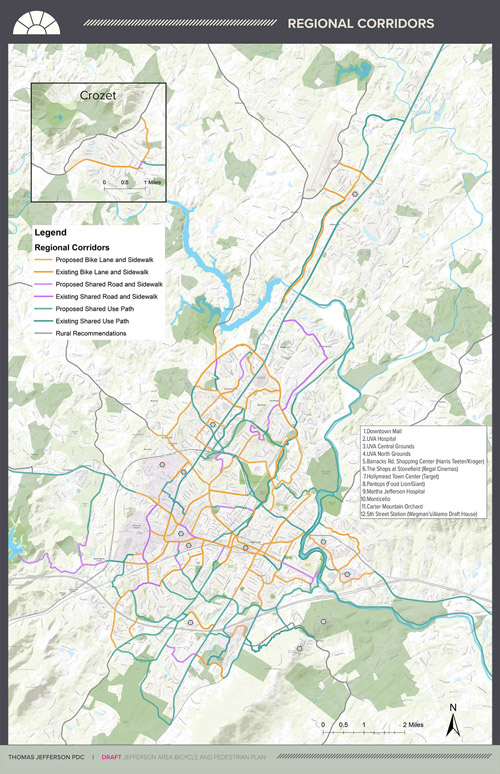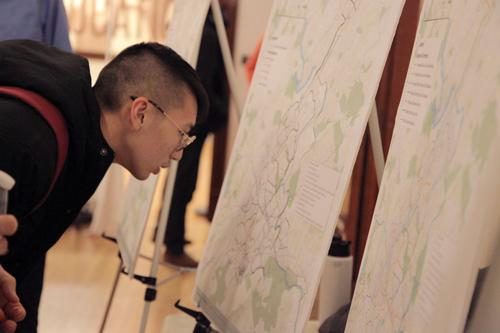PEC has been working with the Thomas Jefferson Planning District Commission (TJPDC) to link communities in the Charlottesville/Albemarle urban core using greenways and other bike and pedestrian infrastructure. A more fully realized network will provide better opportunities for transportation and recreation. High-quality greenways benefit residents and communities in a myriad of ways. Additionally, they improve the environment and make the community more appealing, prosperous and attractive to investment.

TJPDC’s Jefferson Area Bike and Pedestrian Plan is a key milestone in that collaboration. The plan covers Charlottesville and Albemarle, Fluvanna, Greene, Louisa and Nelson counties, but it focuses on the combined Charlottesville/Albemarle urban core. With support from the Charlottesville Area Community Foundation, PEC has led extensive community engagement to gather data and input for the plan and to mobilize and coordinate public support for its implementation.
We have hosted and attended more than 300 meetings and gatherings in community centers, parks, businesses, classrooms, art spaces, restaurants and other public spaces like sidewalks and the Downtown Mall. With help from our coalition partners, we distributed a survey, which received 857 responses that provided insights into barriers to connectivity as well as many specific suggestions. Much of our best learning came from events that redefined what a Planning Meeting could be, such as a hip-hop charrette and a series of social bike rides. These reframed issues and illuminated questions that don’t often arise in normal public meetings — and they brought in many new voices too.
The resulting plan lays out a comprehensive network of on-and-off-street infrastructure, including sidewalks, urban bike lanes and routes, shared-use paths (aka greenways) and rural bike routes. The plan also designates priority corridors and recommends ways for the city and county to work together to connect residents to jobs, shopping, healthcare, education and other resources. Once adopted, it will guide future transportation and land-use decisions.

Of course, a plan is only the first step. Implementation requires several additional ingredients, including funding from government (local, state, and federal) and the private sector too (foundations and businesses). There needs to be active cooperation between localities and entities from other sectors (such as healthcare) who are doing related work. Most importantly however, it will require organized and active participation from individuals and organizations.
The Jefferson Area Bicycle and Pedestrian Plan can be downloaded from TJPDC’s web site. There you will also find an interactive map of proposed bike / pedestrian corridors and a form to provide additional input.
